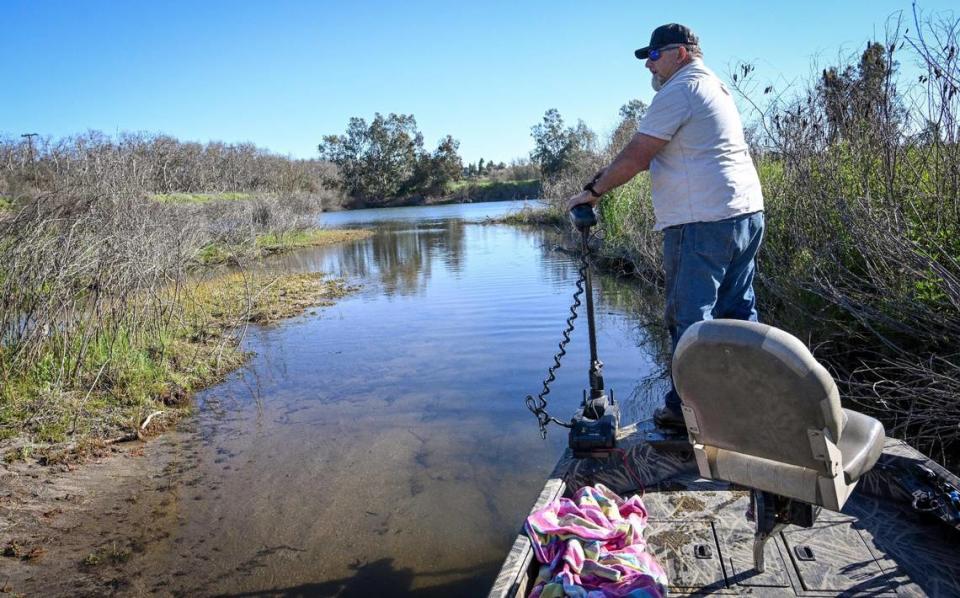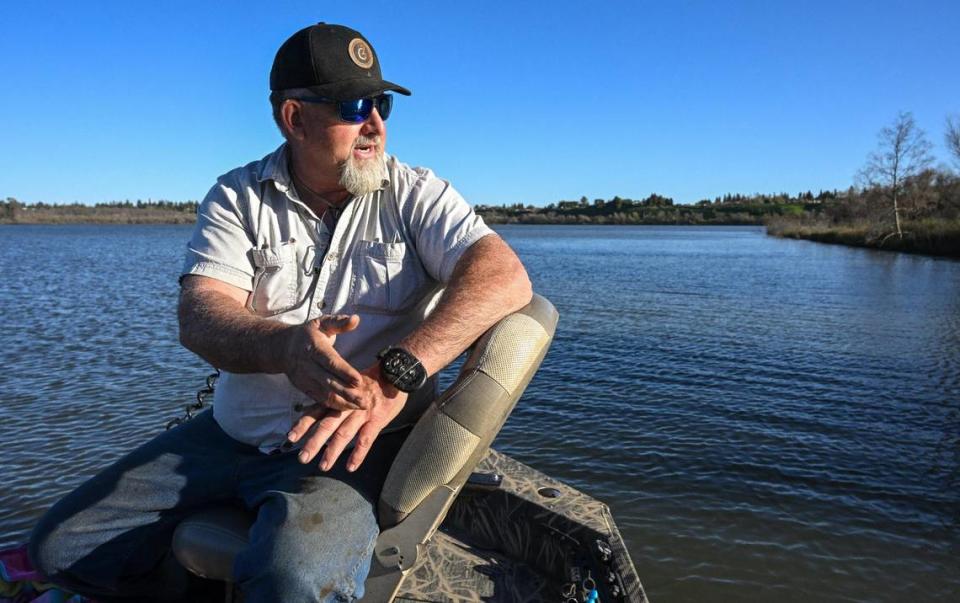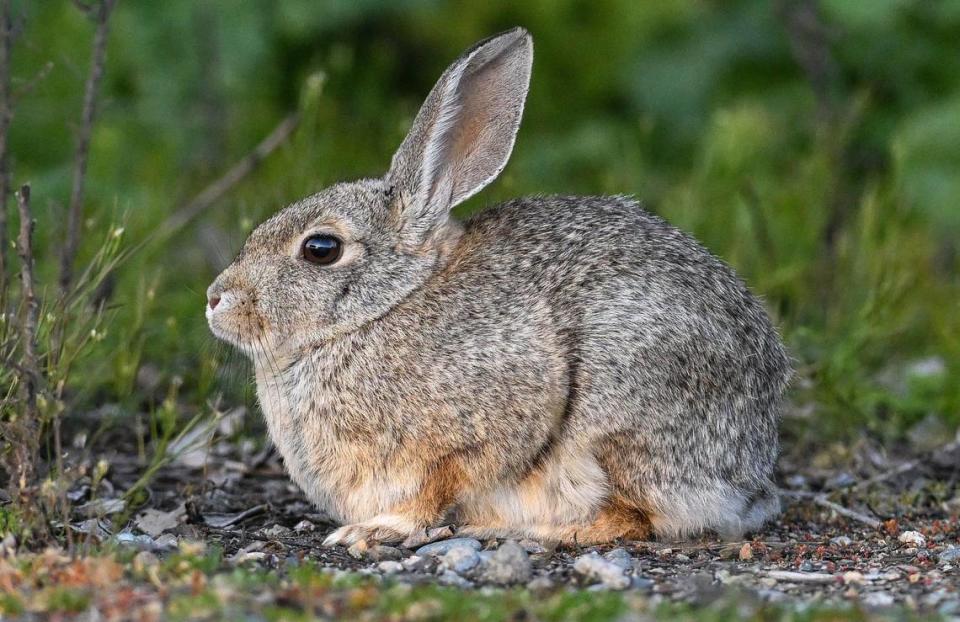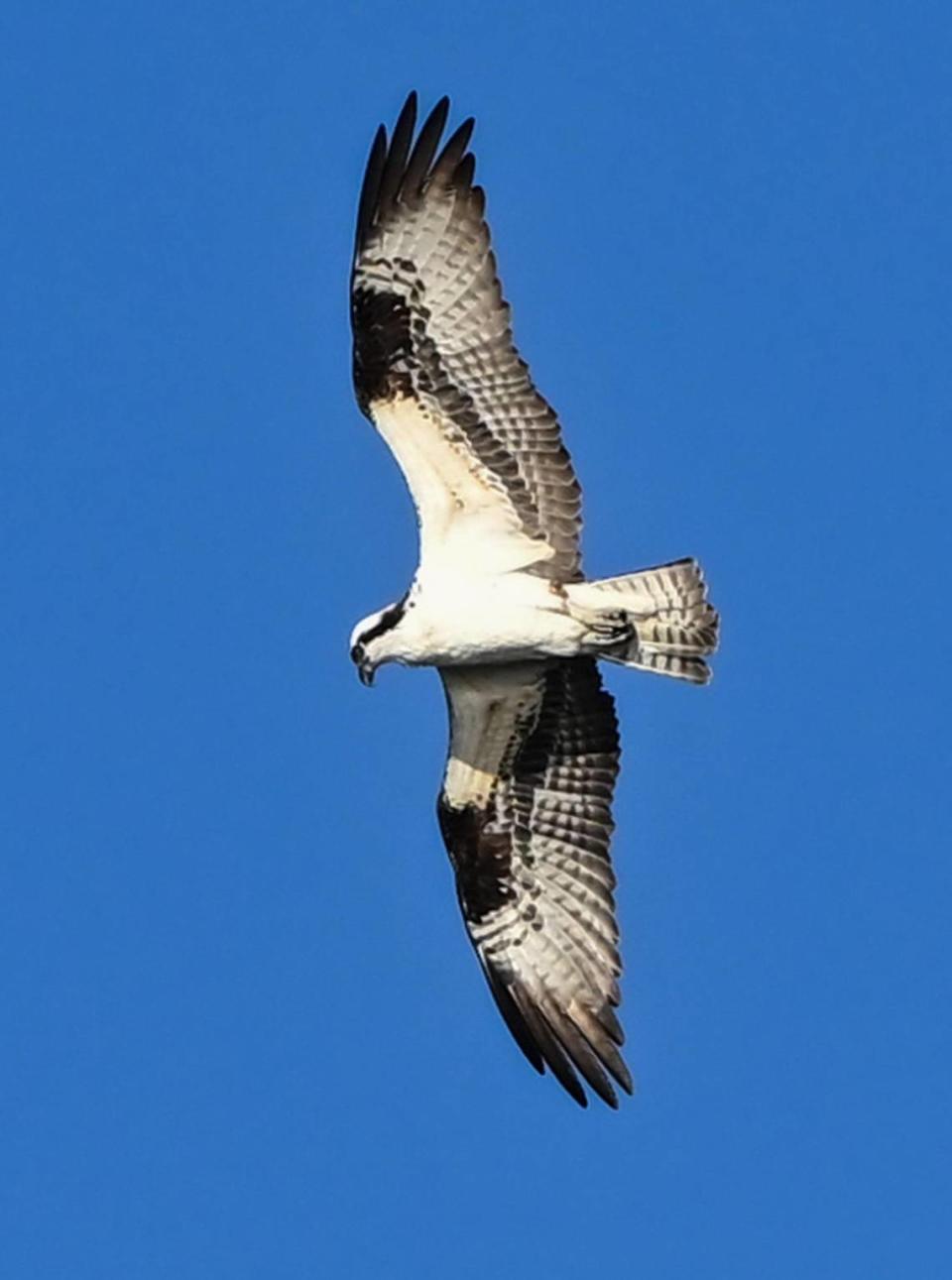Future of Fresno’s largest pond, the ‘crown jewel of the San Joaquin River,’ is murky | Opinion
Fresno’s largest body of water — and likely its most diverse wildlife habitat — shimmers in silence on a sunny spring afternoon.
The quiet is interrupted only by the chirp of songbirds and the hum coming from the electric trolling motor mounted to Louis Moosios’ fishing boat.
“I tell everyone I know this is the crown jewel of the whole San Joaquin River system,” says Moosios, who grew up along the river and owns a fishing guide service.
“I don’t think there’s anywhere else in California that’s a more unique spot than where we’re at.”
Opinion
Where we’re at is Milburn Pond, a reclaimed gravel mining pit that belongs to the San Joaquin River Ecological Reserve and is managed by the Department of Fish and Wildlife. Besides a small overlook on Milburn Avenue, public access is virtually nonexistent and has been for decades. The only way to get here, at least without trespassing on state property, is on small watercraft via the river as the San Joaquin meanders across northwest Fresno.
Listed at 287 acres, Milburn Pond is large enough to be considered a lake. Except for the fact that it’s not surrounded by land on all sides.
“It’s so unique because it’s such a large watershed even though it’s only getting water from a relatively small amount of flow from the San Joaquin River, which allows so much wildlife to prosper,” Moosios says.

Milburn Pond and its surrounding trees are home to snowy egrets, blue herons, green-backed herons and different species of waterfowl. Bald eagles, golden eagles and ospreys are common during certain months. There’s a densely covered island that deer use (yes, deer can swim) to protect their fawns from coyotes, foxes and mountain lions that have also been observed.
What attracts all these species of wildlife? In short, the fish. Milburn Pond is filled with bass, catfish, bluegill, pikeminnows and suckers that feast upon the never-ending supply of invertebrate insects produced in its warm, fairly shallow water. Eighty percent of the pond is 6 feet deep or less according to Moosios, whose boat is equipped with a sonar fish finder.
This food chain has cycled uninterrupted for decades. Even before 1988, when the California Wildlife Conservation Board voted to acquire the property (the sales price was $875,000, according to the meeting minutes) for “preservation and restoration of riparian habitat and for potential inclusion in the proposed San Joaquin Parkway.”
Back then, the San Joaquin River and Milburn Pond weren’t connected except during high-water years. That changed during the winter of 1994-95 when flooding breached the berm separating the two — most of the river actually flowed through the pond — until the levee damage could be repaired and the river returned to its normal channel.
Isolation plan stalled
Milburn Pond and the river have intermingled ever since. Now, though, there’s a state-approved proposal to isolate the pond that has been kicking around since the historic 2006 settlement to restore river flows and self-sustaining salmon runs.
It’s a plan Moosios and others believe would irreparably harm this little-known or observed wildlife sanctuary — even though less destructive and expensive options have been proposed that would accomplish virtually the same stated purpose.
However, nothing will happen anytime soon. The Milburn Pond Isolation Project, which issued a Notice of Determination and published final environmental documents in June 2022, is “currently on hold” due to the state budget deficit, according to a California Department of Water Resources spokesperson.
My reaction: Terrific. Hopefully it’ll remain so for a good long while even by government timekeeping standards. In the meantime, what state officials ought to do is reopen what was a flawed public process (i.e. during the pandemic with a wrong reply email) and strongly reconsider alternatives.

The purpose of the Milburn Pond Isolation Project is to keep non-native bass from exiting the pond to feast on baby Chinook salmon raised in a hatchery some 15 miles upstream. It’s also to prevent any baby salmon in the vicinity from inadvertently entering the pond.
To accomplish this, the state intends to fortify the existing berm and within it construct an equalization saddle with a modified French drain that acts as a giant sieve to equalize Milburn Pond and the river during flow fluctuations. Doing so will entail ripping out a stand of eucalyptus trees that has served as a rookery for so many bird colonies their branches are white from guano. The trees would be replaced by a featureless expanse of rocks.
What could potentially happen next has Moosios even more concerned. He is skeptical the French drain will function as well as state officials claim, citing satellite imagery and water elevation data from Google Earth at two other abandoned gravel pits several miles upstream that were isolated from the river by similar methods in 2018.
‘A stinking swamp’
The authors of the final Environmental Impact Report concede the water level in Milburn Pond will drop by 2 feet following the project’s completion. Moosios believes it could be even more, resulting in increased algae growth and the propagation of invasive plants.
Which would eventually mean goodbye to this beautiful pond, and hello to something else.
“If they do what they want to do in this area, they’re going to take the jewel of the whole San Joaquin River system and turn it into a stinking swamp,” Moosios laments.

The Madera County resident, a licensed aquaculturist whose family has owned property along the river for nearly a century, submitted extensive public comments in opposition to the isolation project. Moosios and others proposed the state use a sein to screen out fish movements between the pond and the river, which could be installed at a fraction of the cost and maintain current water elevations.
The legally required responses they got back from the Department of Water Resources contained in the final EIR are dismissive of their concerns and discount the fish sein idea with the bare minimum of explanation.
“In my opinion they already had their mind made up,” Moosios says. “They just rubber-stamped what they wanted to do.”
For now, the state’s plans for Fresno’s largest body of water and most diverse wildlife habitat are on hold. Long enough, hopefully, for the powers-that-be to be more receptive to a better alternative.



